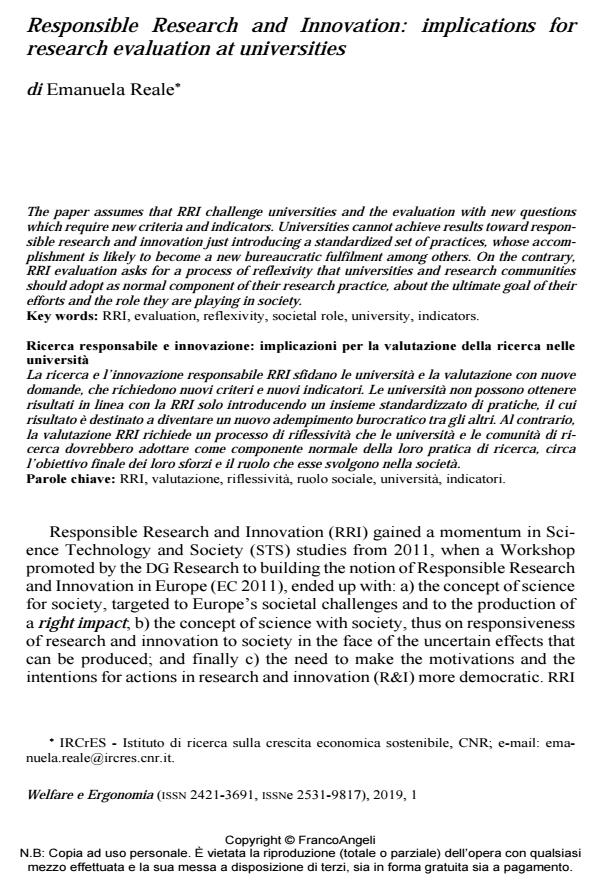Responsible Research and Innovation: implications for research evaluation at universities
Journal title WELFARE E ERGONOMIA
Author/s Emanuela Reale
Publishing Year 2020 Issue 2019/1
Language English Pages 12 P. 55-66 File size 220 KB
DOI 10.3280/WE2019-001006
DOI is like a bar code for intellectual property: to have more infomation
click here
Below, you can see the article first page
If you want to buy this article in PDF format, you can do it, following the instructions to buy download credits

FrancoAngeli is member of Publishers International Linking Association, Inc (PILA), a not-for-profit association which run the CrossRef service enabling links to and from online scholarly content.
The paper assumes that RRI challenge universities and the evaluation with new questions which require new criteria and indicators. Universities cannot achieve results toward responsible research and innovation just introducing a standardized set of practices, whose accomplishment is likely to become a new bureaucratic fulfilment among others. On the contrary, RRI evaluation asks for a process of reflexivity that universities and research communities should adopt as normal component of their research practice, about the ultimate goal of their efforts and the role they are playing in society.
Keywords: RRI, evaluation, reflexivity, societal role, university, indicators
Emanuela Reale, Responsible Research and Innovation: implications for research evaluation at universities in "WELFARE E ERGONOMIA" 1/2019, pp 55-66, DOI: 10.3280/WE2019-001006